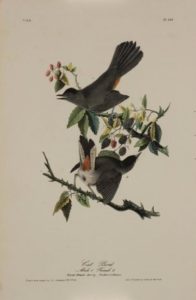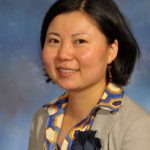The McClung plays a big role in the UT experience for many members of our campus community. To highlight these connections, we asked UT faculty and staff to tell us about an object in our collection that has impacted their classes, their students, or their own exploration within the museum.

“Cat Bird” from “Birds of North America,” John James Audubon, Hand-colored lithograph, 1996.5.9
 Shellen Wu, Associate Professor of History, uses collection materials from the McClung for teaching almost every semester. She specifically uses the museum’s expansive natural history illustration collection.
Shellen Wu, Associate Professor of History, uses collection materials from the McClung for teaching almost every semester. She specifically uses the museum’s expansive natural history illustration collection.
“My assignment using the natural history prints from the museum collection is one of the students’ favorite assignments,” Dr. Wu states. “It forces them to look closely at these prints, their size, coloring, background, as well as the plant or animal in the depictions. One student raved about how the Audubon prints reminded him of scenes he encountered growing up in the Smoky Mountains.”
The museum houses a series of natural history prints from famed painter and naturalist, John James Audubon, whose focus was birds. His master work, The Birds of North America, contains illustrations of 435 birds as life-sized, hand-colored engravings that were produced by Audubon and his assistants. Of the birds in the publication, twenty-five species were identified for the first time by Audubon and nine birds have since gone extinct.
The project was first released as smaller sets of prints from between 1827 and 1838. The first full, handcrafted folio was created in 1844. Only 12 complete original copies of the folio are known to still exist. Most prints have been separated from their original set, such as the ones housed here at the McClung. The Birds of North America is largely considered one of the best natural illustration works ever created and a pivotal work of ornithology. In fact, Audubon’s impact, largely because of this publication, has been so long-lasting that his name is still synonymous with the study of birds and life science education.
When Dr. Wu exposes her students to handcrafted prints by Audubon or another naturalist’s work at the at the McClung she notes the impact and their reactions. She states, “For many students this is the first time engaging so closely with an object from a museum. Many of them seem awed by their beauty.”